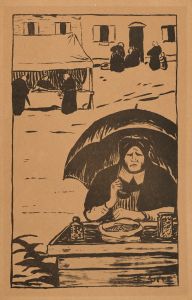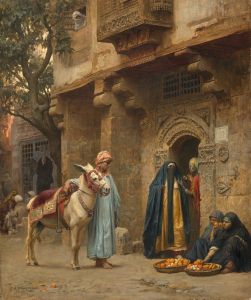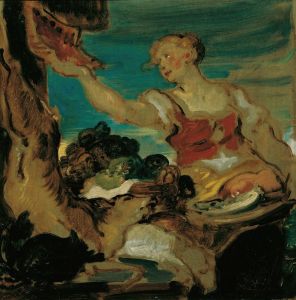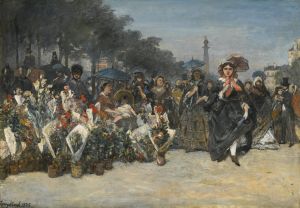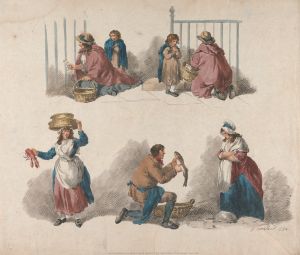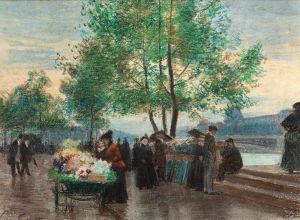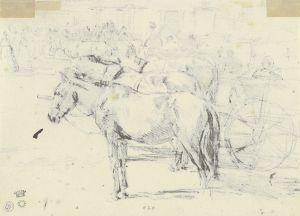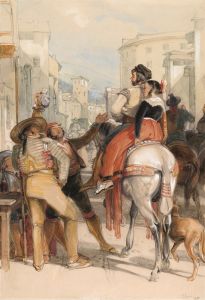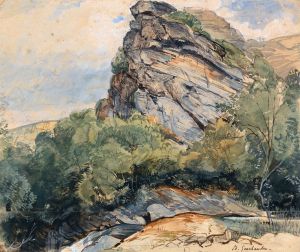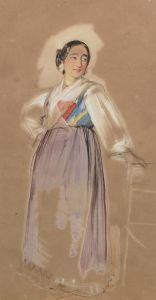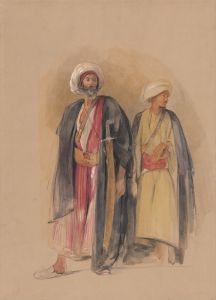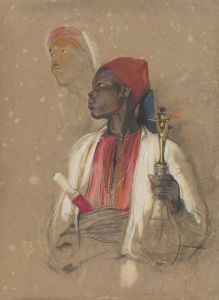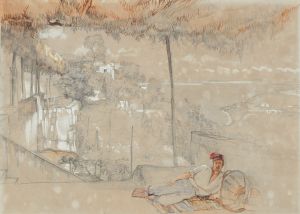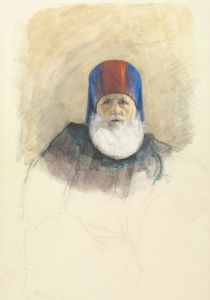
Sketch for In the Bezestein, El Khan Khalil, Cairo
A hand-painted replica of John Frederick Lewis’s masterpiece Sketch for In the Bezestein, El Khan Khalil, Cairo, meticulously crafted by professional artists to capture the true essence of the original. Each piece is created with museum-quality canvas and rare mineral pigments, carefully painted by experienced artists with delicate brushstrokes and rich, layered colors to perfectly recreate the texture of the original artwork. Unlike machine-printed reproductions, this hand-painted version brings the painting to life, infused with the artist’s emotions and skill in every stroke. Whether for personal collection or home decoration, it instantly elevates the artistic atmosphere of any space.
"Sketch for In the Bezestein, El Khan Khalil, Cairo" is a painting by the British artist John Frederick Lewis, who is renowned for his detailed and vivid depictions of Orientalist themes. Lewis was born in London in 1804 and became one of the most celebrated Orientalist painters of the 19th century. His works are known for their meticulous attention to detail and vibrant use of color, which bring to life the scenes he observed during his extensive travels in the Middle East.
The painting "Sketch for In the Bezestein, El Khan Khalil, Cairo" is a preparatory work for one of Lewis's larger and more finished pieces. The term "Bezestein" refers to a type of covered market or bazaar, which was a common feature in many Middle Eastern cities. El Khan Khalil, or Khan el-Khalili, is a famous bazaar in Cairo, Egypt, known for its bustling atmosphere and diverse array of goods, from spices and perfumes to jewelry and textiles.
Lewis traveled to Cairo in the 1840s, where he lived for nearly a decade. During his time in Egypt, he immersed himself in the local culture and meticulously documented his observations through sketches and paintings. His works from this period are characterized by their authenticity and attention to the intricate details of daily life in Cairo.
The "Sketch for In the Bezestein, El Khan Khalil, Cairo" captures a moment in the vibrant marketplace. Although it is a preparatory sketch, it already showcases Lewis's skill in rendering the textures and patterns of the market's architecture and the variety of goods on display. The sketch likely served as a study for a more detailed and polished painting, allowing Lewis to experiment with composition and lighting before committing to the final piece.
Lewis's work is often praised for its ethnographic accuracy and artistic quality. His ability to convey the atmosphere of the bazaar, with its lively interactions and rich visual details, provides a valuable glimpse into 19th-century Cairo. The sketch not only highlights the commercial activity of the bazaar but also reflects the cultural exchange and daily life that characterized the city during this period.
John Frederick Lewis's contributions to Orientalist art have been recognized for their depth and authenticity. His paintings, including "Sketch for In the Bezestein, El Khan Khalil, Cairo," continue to be appreciated for their historical significance and artistic merit. They offer a window into a world that fascinated many in the West during the 19th century and remain important works for understanding the cultural and artistic exchanges between Europe and the Middle East.





